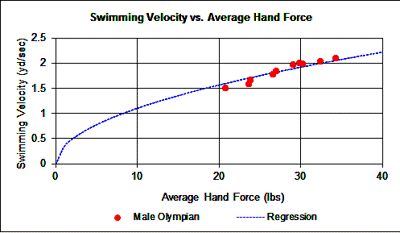Analyzing Hand Force in Swimming: Three Typical Limiting Factors
Rod Havriluk, Ph.D.
American Swimming Magazine, 2006(3), 14-18.
Hand force has received considerable attention in the swimming literature. Some of the focus has been on describing the characteristics of fast swimmers (e. g. Rouard, Schleihauf, & Troup, 1996; Schleihauf et al., 1988). However, all the characteristics of fast swimmers are not necessarily positive elements of technique. The purpose of this article is to explain the importance of hand force in swimming and how even the fastest swimmers in the world are limited by their pattern of application of hand force.
Once a limiting factor is detected, a change in technique can be addressed. Changes in hand path, pitch, and/or speed may be appropriate. These changes can be directed at minimizing the bilateral differences, force losses, and wasted motion, resulting in a higher average hand force. Because of the relationship of hand force and swimming velocity, an increase in hand force will result in faster swimming.

